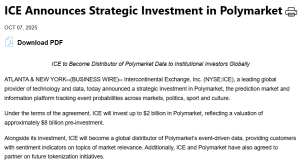Nansen brings Metis Andromeda’s onchain activity into clear view
Nansen just flipped the lights on inside Ethereum’s most opaque scaling playground. By integrating Metis Andromeda, its AI-driven analytics are exposing the smart money flows, hidden dApp traction, and whale movements that Layer-2 users have been guessing at for years.
- Nansen integrates Metis Andromeda, an Ethereum Layer-2 network, into its AI-powered analytics platform.
- The move enables real-time tracking of wallet activity, liquidity flows, and on-chain metrics previously hidden in fragmented data.
According to a press release shared with crypto.news on August 8, blockchain analytics firm Nansen has integrated Metis Andromeda, a permissionless Ethereum Layer-2 network, into its real-time analytics and social intelligence platform.
The move brings Metis activity under Nansen’s AI-powered lens, enabling live tracking of wallet movements, liquidity flows, and on-chain trends that were previously buried in fragmented datasets. The partnership follows Metis’ recent Andromeda upgrade, which introduced a dual-chain structure and enhanced decentralization features.
Metis’ design and the new lens on Layer-2 activity
According to the statement, Metis Andromeda was built to serve as a high-capacity foundation for decentralized applications, offering developers an Ethereum-compatible environment with low transaction costs and rapid finality.
The timing of Nansen’s integration aligns with Metis’ recent technical leap. The Andromeda upgrade introduced Hyperion, a parallelized execution layer optimized for AI and high-throughput dApps, while ReGenesis slashed historical data bloat—critical for long-term scalability.
Now, with Nansen’s AI parsing every transaction, developers can see exactly how these upgrades are performing in real-world conditions, from sequencer efficiency to smart contract bottlenecks.
Transparency as a growth engine
For Metis CEO Tom Ngo, Nansen’s analytics are foundational for the network’s next phase. “Real-time analytics and monitoring tools from Nansen bring new levels of transparency and usability to the Metis ecosystem,” he noted.
The implication is clear: in a market where Layer-2s often obscure real usage with inflated metrics, Metis is betting that hard data will attract serious builders.
The numbers support the strategy. Over the past six months, Metis has seen its total value locked climb steadily, with DeFi protocols and gaming applications driving consistent transaction volume.
More telling is the developer activity. Projects leveraging MetisSDK’s modular stack are increasingly targeting sectors like AI and real-world assets, signaling that the network is moving beyond speculative trading and into utility-driven adoption.
You May Also Like

Bitcoin Breaks Below $100K But Stablecoin Inflows Hint at Quiet Re-Risking

Polymarket To Provide UFC, Zuffa Boxing With Real-Time Fan Predictions
